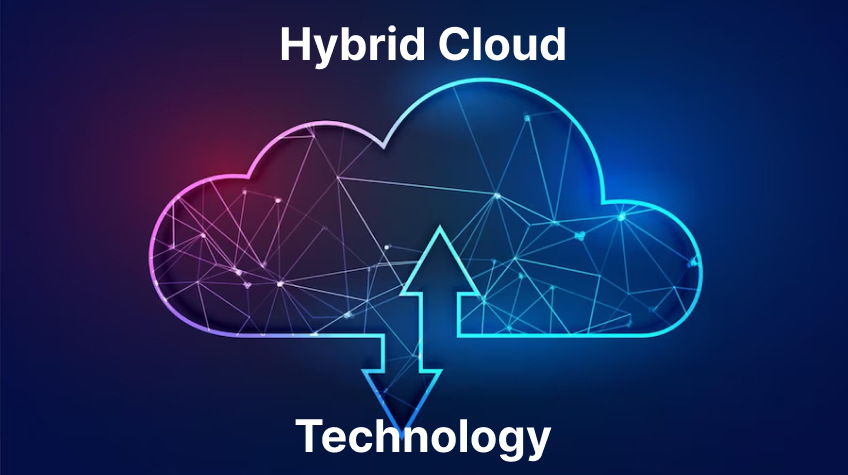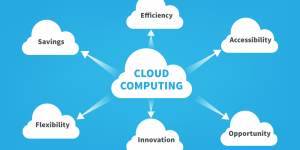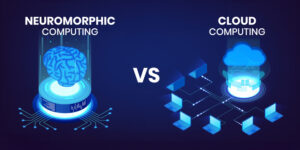
Hybrid Cloud computing is a monumental paradigm shift in the ever-evolving realm of technology. It entails provisioning an array of services over the internet, revolutionizing how businesses and individuals harness computational power and data storage.
Emerging from the roots of utility computing proposed by John McCarthy, cloud computing gained its stride with the rise of high-speed internet and virtualization. Within this landscape, a hybrid cloud emerges as a pivotal solution. By synergizing the capabilities of public and private clouds with on-site infrastructure, the hybrid cloud offers a tailored approach catering to the dynamic demands of the modern digital age.
What is Hybrid Cloud?
Hybrid cloud refers to a sophisticated computing environment that amalgamates the strengths of both public and private clouds. In this innovative setup, organizations can seamlessly integrate their on-premises infrastructure with the scalability and accessibility of public cloud services.
This dynamic fusion allows businesses to strategically allocate workloads, storing sensitive data on private servers while leveraging the agility of public resources for less sensitive tasks. By maintaining this harmonious balance, the hybrid cloud empowers enterprises to optimize performance, enhance security, and efficiently adapt to evolving operational needs. It is a pivotal solution in today’s ever-evolving technological landscape.
Hybrid Cloud Benefits
Flexibility and Scalability
Flexibility and scalability are paramount advantages offered by hybrid cloud solutions. This approach empowers businesses to seamlessly expand or shrink their resources in response to fluctuating demands.
The hybrid model strikes a harmonious equilibrium between the strengths of private and public clouds, enabling organizations to harness the control and security of private infrastructure for sensitive data while capitalizing on the vast scalability of public cloud services for non-sensitive workloads. This dual nature of flexibility ensures optimal resource allocation, cost efficiency, and the agility to navigate the ever-changing digital landscape.
Data Security and Compliance
Data security and compliance are pivotal attributes of hybrid cloud solutions. By enabling the storage of sensitive data on-premises, hybrid cloud architecture offers a safeguard against potential vulnerabilities inherent in public cloud environments. This approach assures businesses that their critical information remains under their direct control.
Additionally, hybrid cloud solutions facilitate adherence to stringent industry regulations and standards. This is crucial for sectors such as finance and healthcare, where data security and privacy are paramount. With a hybrid cloud, organizations can seamlessly align their IT infrastructure with regulatory requirements while harnessing the benefits of cloud computing.
Cost Optimization
Cost optimization is a driving force behind hybrid cloud adoption. Businesses can significantly reduce operational expenses by strategically moving non-sensitive workloads to the public cloud. In this way, resources are allocated efficiently, preventing unnecessary investment in infrastructure that might remain underutilized.
Hybrid cloud solutions empower organizations to scale up during peak periods and scale down when demand subsides, ensuring cost efficiency. Moreover, by capitalizing on the pay-as-you-go model of the public cloud, enterprises can avoid upfront capital expenditures and instead allocate financial resources more effectively across their IT landscape.
Disaster Recovery and Business Continuity
Disaster recovery and business continuity form the bedrock of hybrid cloud advantages. The hybrid cloud guarantees data preservation despite unexpected disruptions through data redundancy across diverse environments. In the face of failures, its multi-faceted approach enables rapid recovery.
Businesses can curtail downtime and sustain operations by shifting workloads between on-premises and public cloud resources. This proficiency safeguards vital data, curbs financial losses, and upholds client confidence. The resiliency of the hybrid cloud serves as a robust cornerstone, empowering organizations to navigate challenges and ensure uninterrupted functionality adeptly.
Performance Optimization
Performance optimization is a hallmark of hybrid cloud strategies. Businesses achieve low-latency operations crucial for real-time processing by strategically placing critical workloads on-premises. Simultaneously, the ability to burst into the public cloud during peak demands ensures seamless scalability.
This dynamic approach allows organizations to maintain optimal performance levels, even when confronted with fluctuating workloads. Hybrid cloud’s capacity to balance resource utilization based on real-time needs empowers enterprises to deliver consistent, high-quality user experiences. This strategy aligns computing resources precisely with requirements, solidifying the hybrid cloud as a potent tool for achieving unparalleled performance efficiency.
Hybrid Cloud Strategy

Source: Architecting IT
Assessment of Workloads
Workload assessment constitutes a crucial step in hybrid cloud integration. This process involves discerning workloads best suited for hybrid cloud deployment while scrutinizing performance, security, and compliance prerequisites. Businesses ensure seamless migration, resource optimization, and data integrity by accurately identifying these workloads.
A thorough analysis of performance metrics, security demands, and regulatory requirements guarantees that each workload finds its optimal hosting environment. This meticulous evaluation paves the way for a successful hybrid cloud strategy, aligning technology choices with the operational intricacies of the organization and facilitating a harmonious coexistence of on-premises and cloud resources.
Data Management and Integration
Data management and integration are pivotal facets of hybrid cloud synergy. Facilitating efficient data movement between public and private clouds ensures seamless accessibility and utilization. This dynamic interplay is complemented by robust data synchronization mechanisms, assuring consistency across diverse environments. By harmonizing data workflows, businesses can harness the benefits of both realms while maintaining uniformity.
Efficient data integration strategies enable real-time insights, informed decision-making, and enhanced operational agility. This cohesive approach to data management fosters an environment where information flows effortlessly, propelling the organization towards optimized performance and enriched outcomes in the hybrid cloud landscape.
Application Architecture
Crafting an optimal application architecture is pivotal in hybrid cloud dynamics. Designing applications for hybrid deployment necessitates a thoughtful approach that capitalizes on the strengths of both private and public clouds. This involves discerning which components of an application are best situated within each environment.
By strategically allocating workloads, businesses increase efficiency, scalability, and performance. Numerous decisions affect the overall functionality and user experience of this intricate orchestration. A meticulous application architecture maximizes the benefits of a hybrid cloud and establishes a framework for seamless interaction between on-premises infrastructure and cloud resources.
Resource Monitoring and Management
Resource monitoring and management are pivotal in hybrid cloud orchestration. Employing cutting-edge tools for continuous resource monitoring and optimization is essential for maintaining peak performance and cost-effectiveness. Additionally, automation takes center stage in workload distribution. Businesses ensure optimal resource utilization, scalability, and responsiveness by intelligently distributing workloads between on-premises and cloud environments.
This dynamic automation streamlines operations, adapts to shifting demands, and minimizes manual intervention. The symbiotic integration of monitoring tools and automation enhances the hybrid cloud’s efficiency and empowers organizations to focus resources on innovation and growth rather than routine management tasks.
Hybrid Cloud Examples
Amazon Web Services (AWS) Outposts
Amazon Web Services (AWS) Outposts is a prime illustration of hybrid cloud innovation. This groundbreaking solution bridges the gap between cloud and on-premises infrastructure by extending AWS services to local data centers. This approach offers businesses the best of both worlds, ensuring data residency requirements while retaining the agility of cloud resources.
With seamless integration and management, AWS Outposts facilitates a unified environment where organizations can seamlessly migrate, manage, and optimize workloads. This exemplifies how hybrid cloud solutions like AWS Outposts transcend traditional boundaries, empowering enterprises to customize their infrastructure to meet specific needs without compromising scalability or control.
Microsoft Azure Stack
Microsoft Azure Stack is a striking hybrid cloud illustration, a transformative offering that brings Azure services directly to local data centers. By using this approach, businesses can take advantage of Azure’s cloud capabilities while retaining sensitive data on-site. The result is a consistent hybrid cloud experience, seamlessly integrating on-premises infrastructure with the public cloud.
Azure Stack empowers organizations to build and deploy applications across this unified environment, fostering a cohesive ecosystem where workloads shift, scale, and interact seamlessly. This innovative solution underscores the potential of hybrid cloud models in providing both flexibility and control, revolutionizing the modern IT landscape.
Google Anthos
A notable example of hybrid cloud evolution is Google Anthos. This groundbreaking platform drives application modernization through containers and Kubernetes, enabling seamless deployment across diverse environments. Anthos empowers businesses to navigate the complexities of multi-cloud and hybrid-cloud scenarios with finesse.
It establishes a unified operational model by orchestrating workloads across on-premises infrastructure and public clouds. This advanced approach optimizes application performance and streamlines management, enhancing scalability and resource allocation. Google Anthos exemplifies the innovative potential of hybrid cloud solutions in propelling enterprises toward a future of enhanced agility and operational efficiency.
Hybrid Cloud Infrastructure
- Blend of Environments: Fusion of on-premises data centers, private clouds, and public cloud services.
- Seamless Connectivity: High-speed, reliable network connections between different environments.
- Data Integration: Efficient movement and synchronization of data across domains.
- Resource Scalability: Ability to scale computing resources established on demand.
- Workload Mobility: Flexibility to move applications and workloads between environments.
- Security Measures: Implementation of security protocols, access controls, and encryption.
- Management Tools: Specialized tools for unified management and orchestration.
- Latency Consideration: Placing critical workloads on-premises for low-latency requirements.
- Hybrid Networking: Network architectures that span on-premises and cloud components.
- Multi-Cloud Support: Integration and management of multiple cloud providers if required.
- Compliance Alignment: Ensuring regulatory compliance across diverse environments.
- Backup and Recovery: Strategies for data backup and disaster recovery.
- Cost Optimization: Efficient allocation of workloads to minimize costs.
- Monitoring and Analytics: Tools for monitoring, analyzing, and optimizing resources.
- Automation: Automation of routine tasks for efficient resource utilization.
- Service-Level Agreements (SLAs): Establishing SLAs for performance and availability.
- Hybrid Identity Management: Managing user identities across different environments.
- Application Modernization: Designing apps to leverage hybrid cloud benefits.
- Vendor Solutions: Utilizing services provided by hybrid cloud solution vendors.
- Workload Placement: Deciding where to host workloads based on requirements.
- Adaptation Strategies: Shifting strategies as business needs evolve.
Hybrid Cloud Security

- Data Encryption: Applying encryption to data in transit and at rest across environments.
- Access Control: Implementing stringent access controls and user authentication mechanisms.
- Identity and Access Management (IAM): Handling user identities and authorizations across hybrid environments.
- Network Security: Establishing firewalls, intrusion detection systems, and monitoring tools.
- Security Policies: Creating consistent security policies across on-premises and cloud resources.
- Compliance Adherence: Ensuring compliance with relevant industry regulations and standards.
- Threat Detection: Employing AI and machine learning to catch anomalies and possible dangers.
- Incident Response: Formulating strategies to address security breaches and incidents promptly.
- Patch Management: Regularly updating and patching systems to mitigate vulnerabilities.
- Secure APIs: Ensuring APIs used for integration are safe and protected.
- Logging and Monitoring: Enforcing strong logging and monitoring mechanisms for visibility.
- Physical Security: Securing physical access to data centers and on-premises infrastructure.
- Data Residency: Addressing data residency and sovereignty requirements.
- Hybrid Key Management: Managing encryption keys across different environments.
- Security Audits: Performing routine security audits and reviews.
- Hybrid Threat Intelligence: Leveraging threat intelligence across hybrid environments.
- Security Training: Providing ongoing security training for employees and IT teams.
- Vendor Security: Evaluating and choosing secure hybrid cloud solution providers.
- Secure DevOps: Integrating security practices into the DevOps lifecycle.
- Backup and Recovery Security: Securing backup and recovery processes and storage.
- Cloud-native Security Tools: Utilizing cloud-native security services for hybrid components.
Disadvantage of Hybrid Cloud
- Complexity: Managing both on-premises and cloud environments can be intricate and demanding.
- Integration Challenges: Ensuring seamless integration between diverse systems can be difficult.
- Skill Requirements: Hybrid setups require traditional IT and cloud technologies expertise.
- Costs: Hybrid cloud may involve additional integration, data transfer, and management costs.
- Data Security Concerns: Balancing data security between environments can lead to potential vulnerabilities.
- Latency: Latency issues arise when accessing data across on-premises and cloud resources.
- Resource Fragmentation: Improper resource allocation can lead to underutilized or overused resources.
- Vendor Lock-in: Dependency on specific cloud providers might limit flexibility and cost options.
- Regulatory Compliance: Navigating compliance across hybrid setups can be intricate and time-consuming.
- Downtime Risk: Any downtime in either environment can affect operations and user experience.
- Monitoring Complexity: Monitoring performance and security across hybrid environments can be challenging.
- Initial Setup Effort: Integrating existing infrastructure with cloud components can require significant effort.
Conclusion
In the ever-evolving landscape of technology, the hybrid cloud emerges as a transformative force, melding the best of both worlds – the control of on-premises infrastructure and the agility of cloud resources. Its benefits are a symphony of flexibility, security, and scalability, setting the stage for innovation.
As exemplified by Amazon Web Services (AWS) Outposts, Microsoft Azure Stack, and Google Anthos, hybrid cloud solutions empower businesses to navigate complexity seamlessly. Adopting a strategic approach involves meticulous assessment, data management finesse, and vigilant security measures. The journey into the hybrid cloud realm is a testament to the potential of harmonizing diverse landscapes, amplifying efficiency, and unveiling new possibilities in the digital era.






